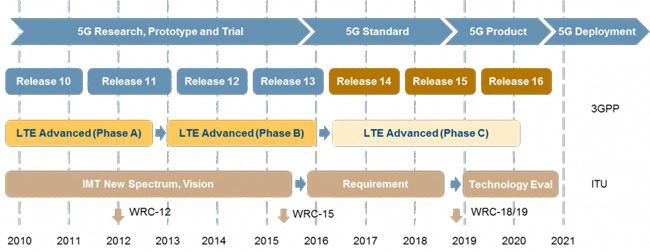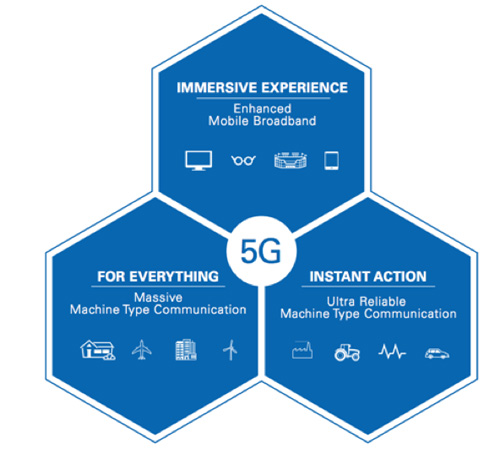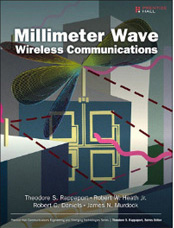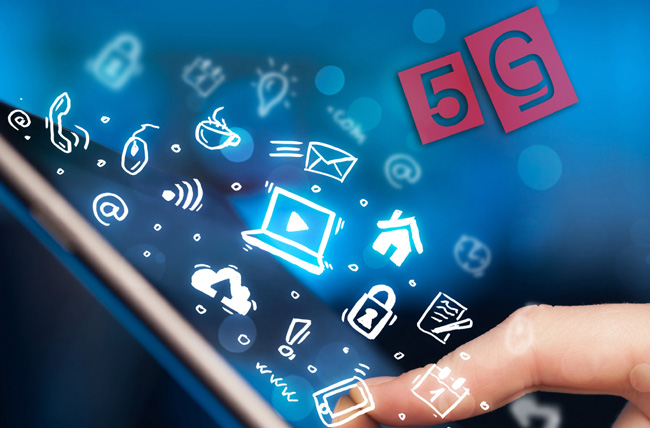Microwave Journal has created this 5G Knowledge Center to keep you up to date on the latest 5G news, standards development, technical articles, trials, and product developments. We have links to various categories of information plus educational material.
Everyone asks about 5G specifications as there is no approved standard yet. The International Telecommunication Union has published draft 5G specs that set performance expectations:
- User downlink speeds of 100 Mbps and uplink of 50 Mbps
- Latency below 4 ms (compared to LTE at 20 ms)
- Mobile service at speeds as fast as 500 km/h (311 mph)
- Peak downlink of 20 Gbps and uplink of 10 Gbps
- Peak downlink spectral efficiency of 30 bit/s/Hz and Uplink of 15 bit/s/Hz.
- Ability to handle 1 million or more devices per square kilometer (about 0.38 square miles)
- Min reliability is 1x10-5 success probability of transmitting layer 2 PDU of 32 bytes within 1 ms
The other often asked question is about timing. As initial plans were for the first standardization to happen in 2020, there has been much pressure from industry to pull in the timeline as 22 mobile communications companies announced collective support for accelerating the 5G new radio (NR) standardization schedule to enable large-scale trials and deployments as early as 2019. Korea plans to implement 5G for the 2018 Winter Olympics so this is expected to be the first large deployment. Here is a timeline from Huawei as an overview on standards.

Use Cases
Below are the 3 high level 5G use cases as defined by 3GPP and IMT 2020. Enhanced Mobile Broadband (eMBB) is better mobile communications capacity and throughput than currently available from 4G LTE so really just an improvement on the current cellular experience enabling faster downloads (>10 Gbps peak rates), augmented/virtual reality, etc. Massive Machine Type Communications is enabling the Internet of Things (IoT) so that millions (or even billions) of devices can be connected globally (>1 million connections/km2). These are typically lower data rate, bursty types of communications so do not require high capacity but a massive amount of connections.Ultra reliable, instant action communications need low latency (<1 ms latency) not currently available from 4G LTE networks and must be ultra reliable for mission critical or human safety applications such as vehicle communications to avoid crashes, remote surgery, etc.

Latest Happenings in 5G
- NI and AT&T announced their collaboration on one of the world’s fastest and most accurate tools for 5G millimeter wave (mmWave) channel characterization
- First Commercial 28 GHz Active Array Antenna Enables Rapid 5G Prototyping
- FCC’s Broadcast Incentive Auction Frees 70 MHz for Mobile Broadband
Find more news, articles and files on our 5G Channel landing page
 5G mmWave Communications Training Course and eBook by Prof. Ted Rappaport
5G mmWave Communications Training Course and eBook by Prof. Ted Rappaport
A 2-day on-demand (self-paced) training course developed by mmWave wireless communications pioneer and educator Prof. Ted Rappaport of NYU WIRELESS covering the fundamental communications, circuits, antennas and propagation issues surrounding emerging 60 GHz wireless LAN and mmWave cellular/backhaul applications. Find out more here.
Free On-Demand WEBINAR: Demystifying 5G and the Evolution to Massive MIMO for Increased Capacity and Profit
This webinar explores two critical technologies for evolving 4G into 5G: virtualization of the baseband processing and massive MIMO antenna arrays. View now
Frequency Matters - Introduction of first commerical 28 GHz active array antenna for 5G Infrastructure

